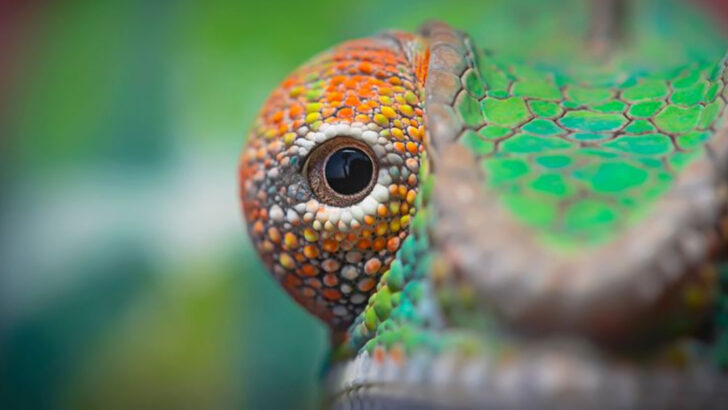The animal kingdom is a vast tapestry of fascinating creatures, each equipped with unique abilities that often surpass human capabilities. A particularly intriguing aspect is vision. Some animals can perceive things that are invisible to us, whether it’s different spectrums of light or intricate patterns. Let’s explore 14 such remarkable animals, whose vision extends beyond the ordinary.
Mantis Shrimp
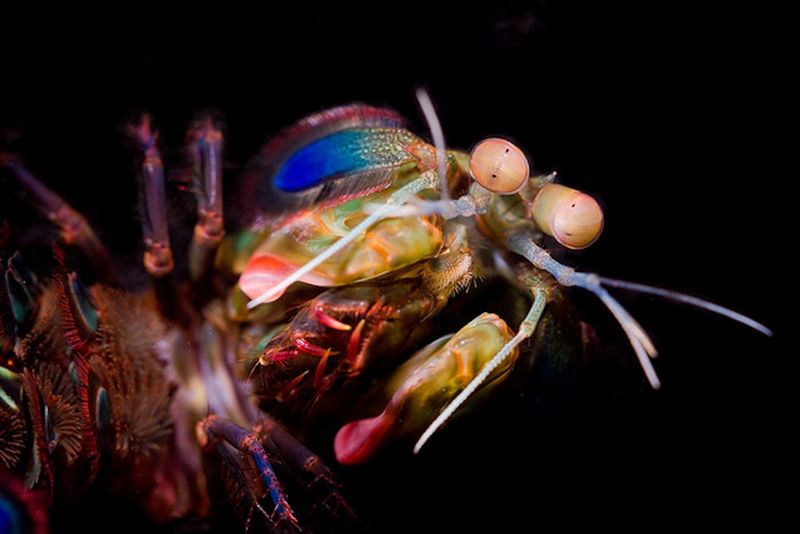
Known for its punch, the mantis shrimp also boasts extraordinary vision. Its eyes contain 16 types of photoreceptors, compared to our three. This allows the mantis shrimp to see ultraviolet light and detect polarized light. Imagine a world where colors are not just more vivid, but entirely different from our perception. This small marine creature perceives the ocean in a way humans cannot fathom. Its visual prowess aids in detecting prey and predators alike. Interestingly, mantis shrimps can also see circularly polarized light, a feature used in advanced optical technologies.
Eagle
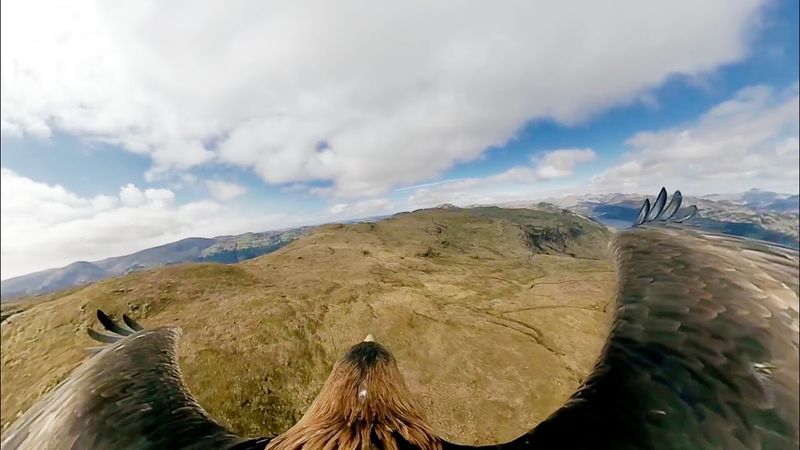
The eagle, a symbol of power, possesses eyesight that is five times sharper than humans. With large pupils and a high density of photoreceptor cells, eagles can spot a rabbit from several miles away. This incredible visual acuity is essential for hunting. Eagles see a broader range of colors and can even detect ultraviolet light. Their eyes are specially adapted to focus quickly, allowing them to dive at high speeds without losing sight of their prey. This mastery over vision is one reason why eagles are such proficient hunters.
Butterfly
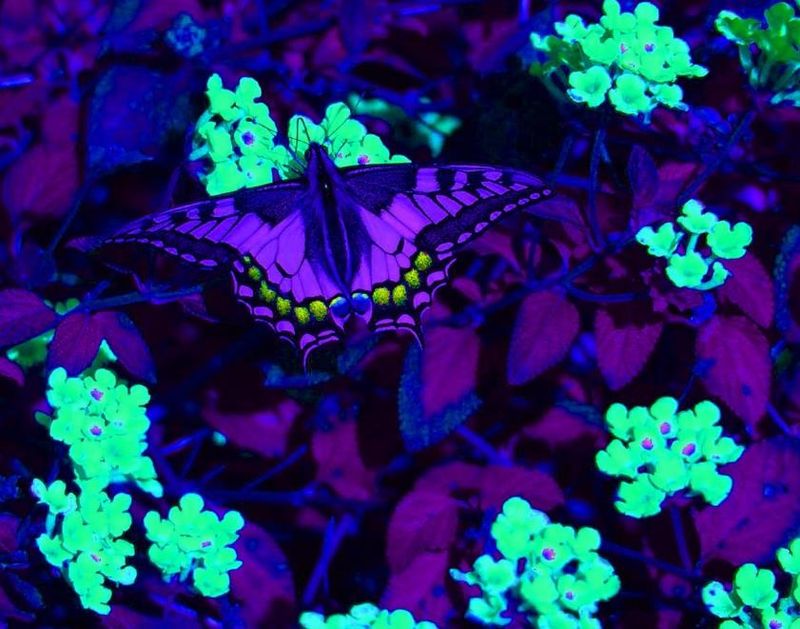
Butterflies may seem delicate, but their vision is anything but. With compound eyes that encompass a wide field of view, butterflies can see ultraviolet patterns on flowers, invisible to humans. These patterns guide them to nectar, ensuring their survival. The ability to perceive ultraviolet light also aids in identifying mates and avoiding predators. Unlike human eyes, butterfly eyes can detect polarized light, which enhances their navigational skills during migration. This multi-faceted vision is an adaptation honed over millions of years, making butterflies adept at thriving in their vibrant environment.
Chameleon
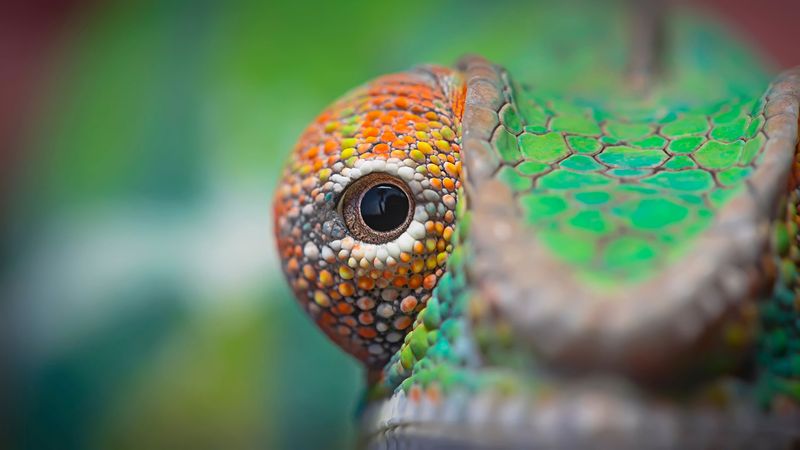
Chameleons are renowned for their color-changing abilities, but their vision is equally astonishing. With eyes that move independently, they can observe two different directions simultaneously. This unique ability provides a full 360-degree view, crucial for spotting prey and predators. Chameleons can focus on objects with remarkable precision, even gauging distances accurately through monocular vision. Their eyes are adapted to detect ultraviolet light, enhancing their ability to locate insects. This complex visual system supports their survival in dense, competitive environments where every glance counts.
Cat
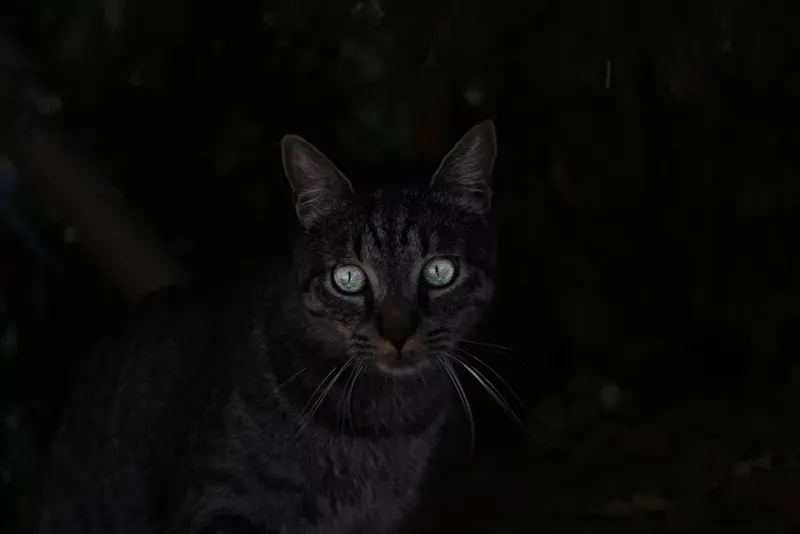
Cats, whether domestic or wild, are creatures of the night, thanks to their superior night vision. Their eyes have a high number of rod cells, which are sensitive to low light. The tapetum lucidum, a reflective layer behind the retina, enhances their ability to see in the dark by reflecting light through the retina. This is why cat eyes seem to glow in the dark. Their nocturnal vision aids in hunting, allowing them to track and capture prey in near darkness. Cats’ ability to see in dim light is a marvel of evolution, perfected for predation.
Pit Viper
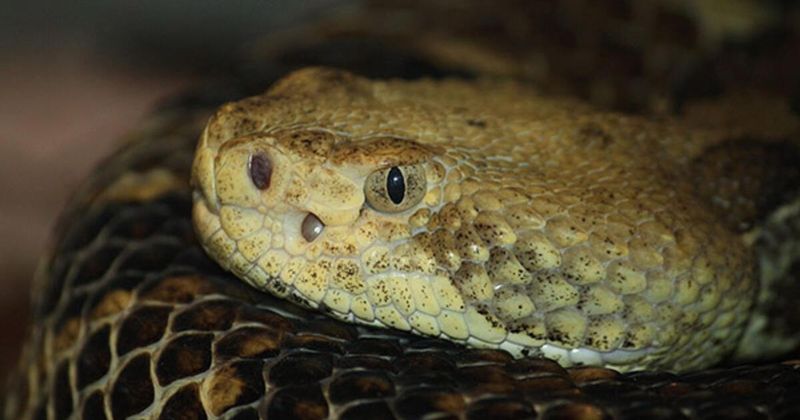
Pit vipers have a deadly advantage—thermal vision. Equipped with specialized pit organs between their eyes and nostrils, they detect infrared radiation from warm-blooded prey. This adaptation allows them to hunt effectively, even in complete darkness. The pit organs function like a thermal imaging camera, enabling these snakes to strike with precision. Their ability to sense heat is crucial for survival in dense forests, where visual cues are limited. This unique sensory adaptation has made pit vipers efficient predators, revered and feared in equal measure for their stealth and accuracy.
Tarsier
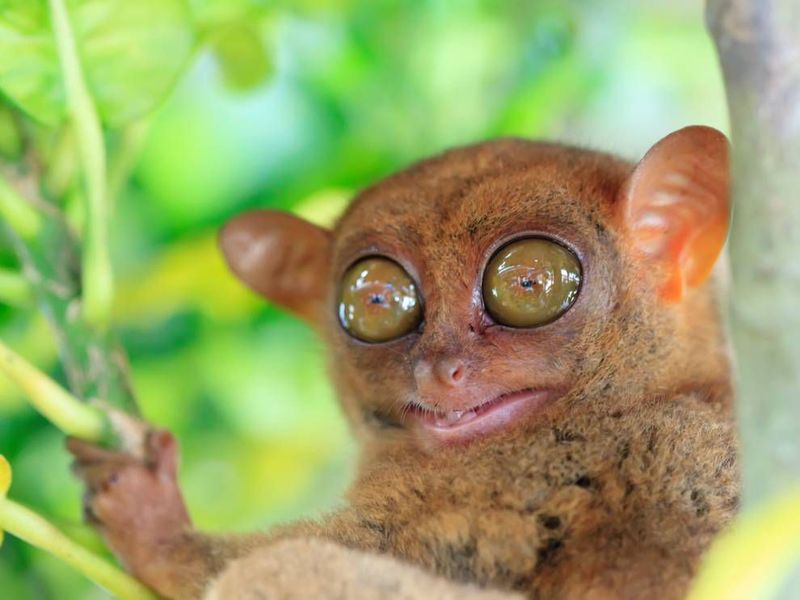
With eyes larger than its brain, the tarsier’s vision is a spectacle of nature. These nocturnal primates have enormous eyes that gather more light, aiding in their night-time activities. Each eye is fixed in its socket, but tarsiers compensate with a flexible neck that can rotate nearly 180 degrees. This adaptation ensures they never miss a sight in the dark jungles. Tarsiers boast excellent depth perception and can detect ultraviolet light. Their extraordinary vision supports their lifestyle as agile hunters, leaping from tree to tree in pursuit of insects and small vertebrates.
Horse
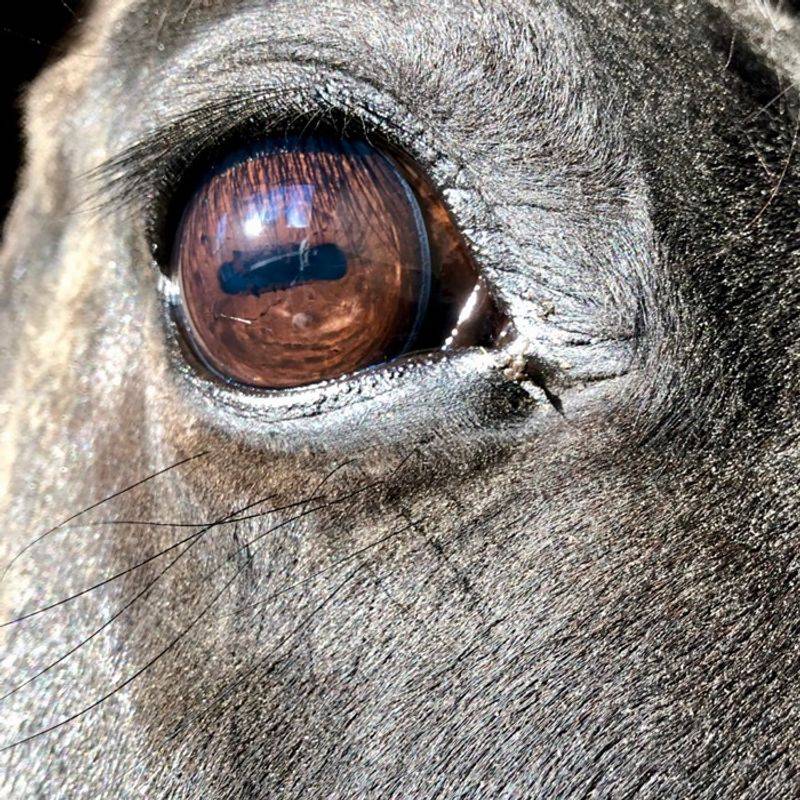
Horses possess panoramic vision that allows them to see almost everything around them without turning their heads. With eyes positioned on the sides of their heads, they have a nearly 360-degree field of view. This is vital for detecting predators on open plains. Horses also have good night vision, thanks to a large number of rod cells and a reflective layer in their eyes. Their ability to see various shades of blue and green aids in distinguishing between different terrains, an essential skill in navigating diverse landscapes. Horses’ vision is both a gift and a shield.
Dragonfly
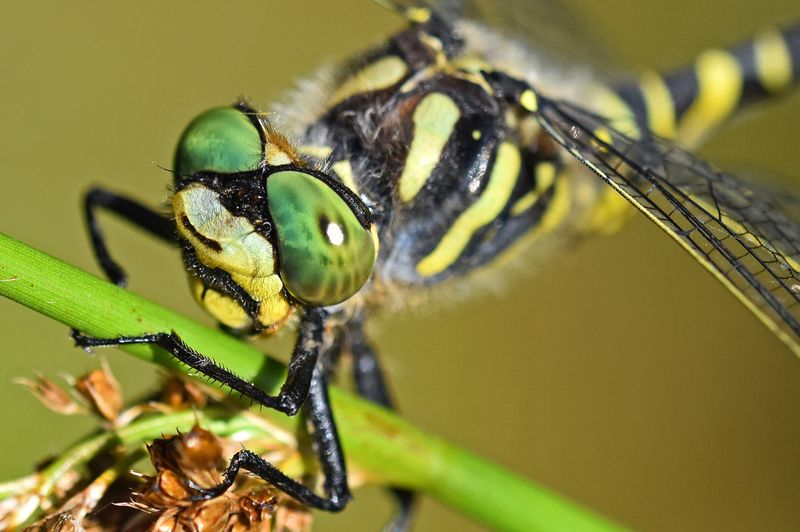
Dragonflies are aerial acrobats, aided by their extraordinary vision. Their large compound eyes cover most of their head, providing an almost 360-degree field of view. Dragonflies can detect even the slightest movements, essential for catching prey mid-flight. Their eyes are equipped with numerous facets, each acting as a tiny lens, allowing them to perceive multiple images simultaneously. This intricate visual system helps dragonflies navigate complex environments with agility. Additionally, they can see ultraviolet and polarized light, enhancing their ability to locate water surfaces for laying eggs.
Shark
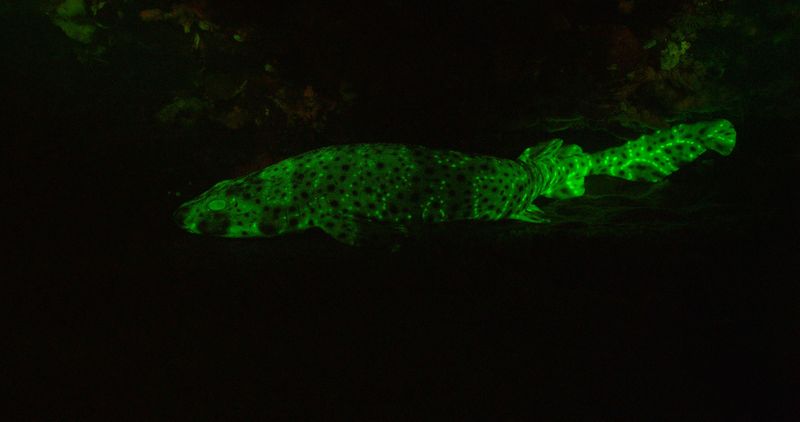
Sharks are the oceans’ apex predators, thanks in part to their keen vision. Their eyes are adapted to the deep, murky waters where light is scarce. With a high concentration of rod cells, sharks excel in low-light conditions. The tapetum lucidum in their eyes reflects light, enhancing their night vision. Sharks can also detect electromagnetic fields, a sense that complements their visual capabilities. This multifaceted perception aids in hunting and navigation. Sharks’ ability to see contrasts in the ocean helps them identify prey, making them efficient hunters of the deep.
Bees
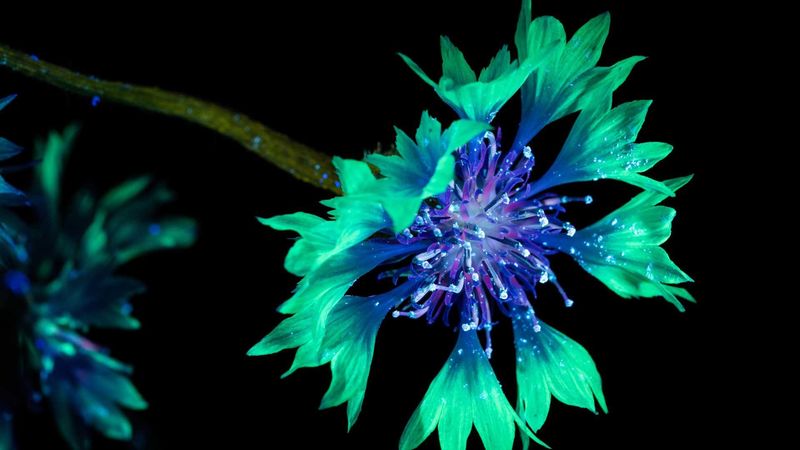
Bees are critical pollinators, guided by their unique vision. Unlike humans, bees can see ultraviolet light, revealing patterns on flowers that guide them to pollen. These patterns are invisible to us but are vital for bees’ navigation. Their compound eyes provide a wide field of view, essential for detecting predators. Bees’ ability to perceive polarized light enhances their orientation and helps them find their way back to the hive. This intricate visual system is a key factor in their role as nature’s pollinators, ensuring the survival of countless plant species.
Octopus
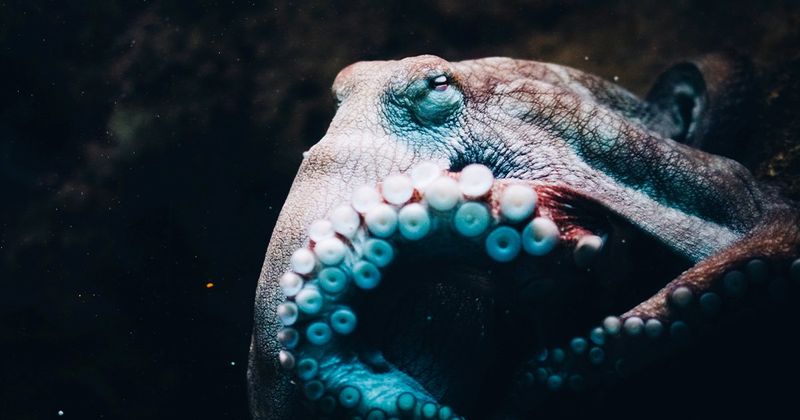
Octopuses are incredibly intelligent, and their vision plays a crucial role in their survival. They have excellent eyesight, adapted to see in the dim light of the ocean depths. Unlike humans, octopuses can detect polarized light, helping them perceive contrasts in the underwater world. This ability aids in hunting and avoiding predators. Their eyes are highly mobile, enabling them to look in different directions without moving their body. This enhances their situational awareness. The octopus’s vision, coupled with its problem-solving skills, makes it a master of disguise and evasion.
Gecko
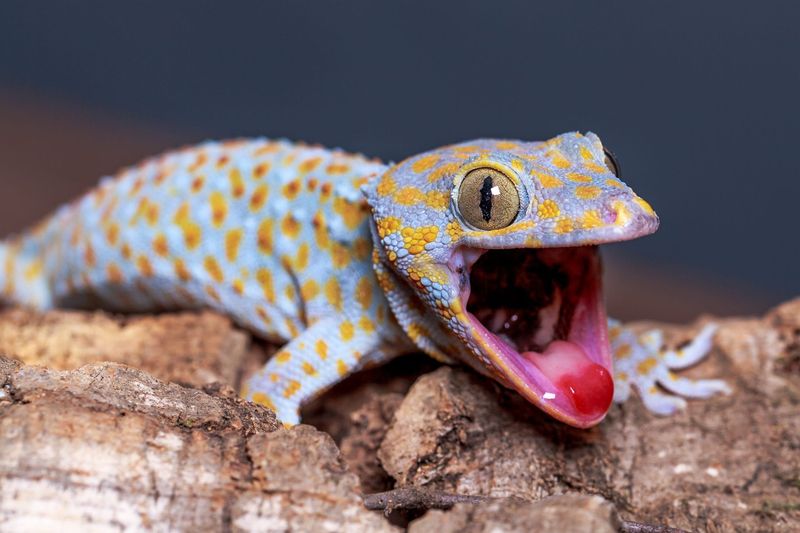
Geckos are nocturnal reptiles with an extraordinary ability to see in the dark. Their eyes are 350 times more sensitive to light than human eyes. Geckos can discern colors even in moonlight, thanks to the multiple concentric zones of different refractive indices in their eyes. This night vision is essential for foraging and avoiding predators. Unlike many nocturnal animals, geckos do not have a tapetum lucidum; instead, their eye structure is highly specialized to amplify available light. This adaptation allows geckos to thrive in their nighttime habitats, exemplifying evolutionary ingenuity.
Pigeon
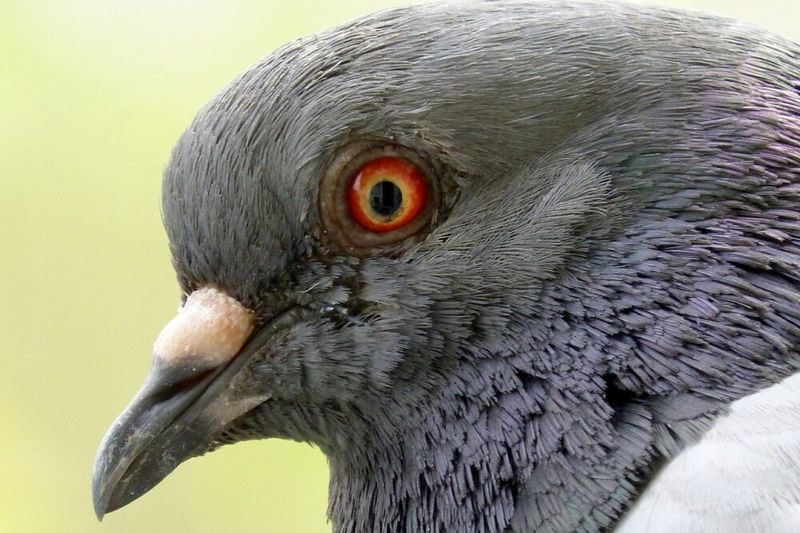
Pigeons are renowned for their navigational skills, supported by their exceptional vision. They possess the ability to see ultraviolet light, which aids in orientation and migration. Pigeons’ eyes are highly sensitive to movement, allowing them to detect potential threats quickly. Their wide field of vision and three-dimensional depth perception make them adept at maneuvering through complex urban environments. Interestingly, pigeons can also detect magnetic fields, a skill that complements their visual navigation. This combination of visual and geomagnetic perception makes pigeons extraordinary navigators of the skies.

